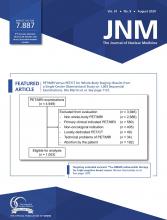REPLY: We wanted to thank Karimzadeh and colleagues for their thoughtful comments on our editorial entitled, “Diagnostic Evaluation of Pulmonary Embolism During the COVID-19 Pandemic” (1). Perforce, any response to an evolving crisis will be based on incomplete data and best judgments. Certainly, in the case of the coronavirus disease 2019 (COVID-19) pandemic, decisions we made in real time were based on the best available information at hand. It is mandatory to stop, reevaluate, and adjust our approach as more information comes to light. We therefore appreciate the constructive comments furnished, as discussed below. By and large, we feel quite comfortable with many of the choices we made at the onset of the COVID-19 surge as they apply to the evaluation of pulmonary embolism.
We certainly agree with the authors that appropriate tools be applied to determine the pretest probability of pulmonary embolism, and we did not mean to be prescriptive in our suggestions, other than recommending that appropriate a priori assessment be performed. Hemodynamic stability is paramount, and no patient should undergo any diagnostic test for which the risk of ill effects would outweigh any potential benefit. We do, however, maintain that in a clinically stable patient, with minimal or no abnormalities on the chest radiograph, a perfusion study is an efficient and rapid method of eliminating the presence of macroscopic pulmonary emboli. Indeed, normal results on perfusion scans were seen in over 85% of patients we studied during the COVID-19 surge, thereby vindicating our approach. We do agree with Karimzadeh and colleagues that in different clinical scenarios, other solutions may become preferable. We must also keep in mind that acute kidney injury has emerged as a possible complication of COVID-19 (2); a potential limitation of CTPA is the nephrotoxicity of iodinated contrast medium, precluding its use in these patients.
The final consideration, that COVID-19 patients may have microscopic disease not picked up by perfusion scintigraphy (or CT pulmonary angiography) (3), is certainly salient and reinforces the authors’ deference to D-dimer levels and clinical judgment. It is interesting that many seriously ill COVID-19 patients are placed on antithrombotic medications to counter their hypercoagulable state and prevent microembolic and microthrombotic phenomena, in and of itself altering the calculus of diagnosis and treatment.
The thrust of our initial editorial was to strongly recommend against use of ventilation scanning during the COVID-19 surge, especially when there are shortages of PCR testing reagents and personal protection equipment and where the status of the patients cannot be ascertained or protection of workers ensured. We suggested, and continue to support the thesis, that when testing for pulmonary embolism is indicated, perfusion scintigraphy alone can serve a useful purpose in screening patients for this disorder.
Footnotes
Published online Jun. 23, 2020.
- © 2020 by the Society of Nuclear Medicine and Molecular Imaging.







